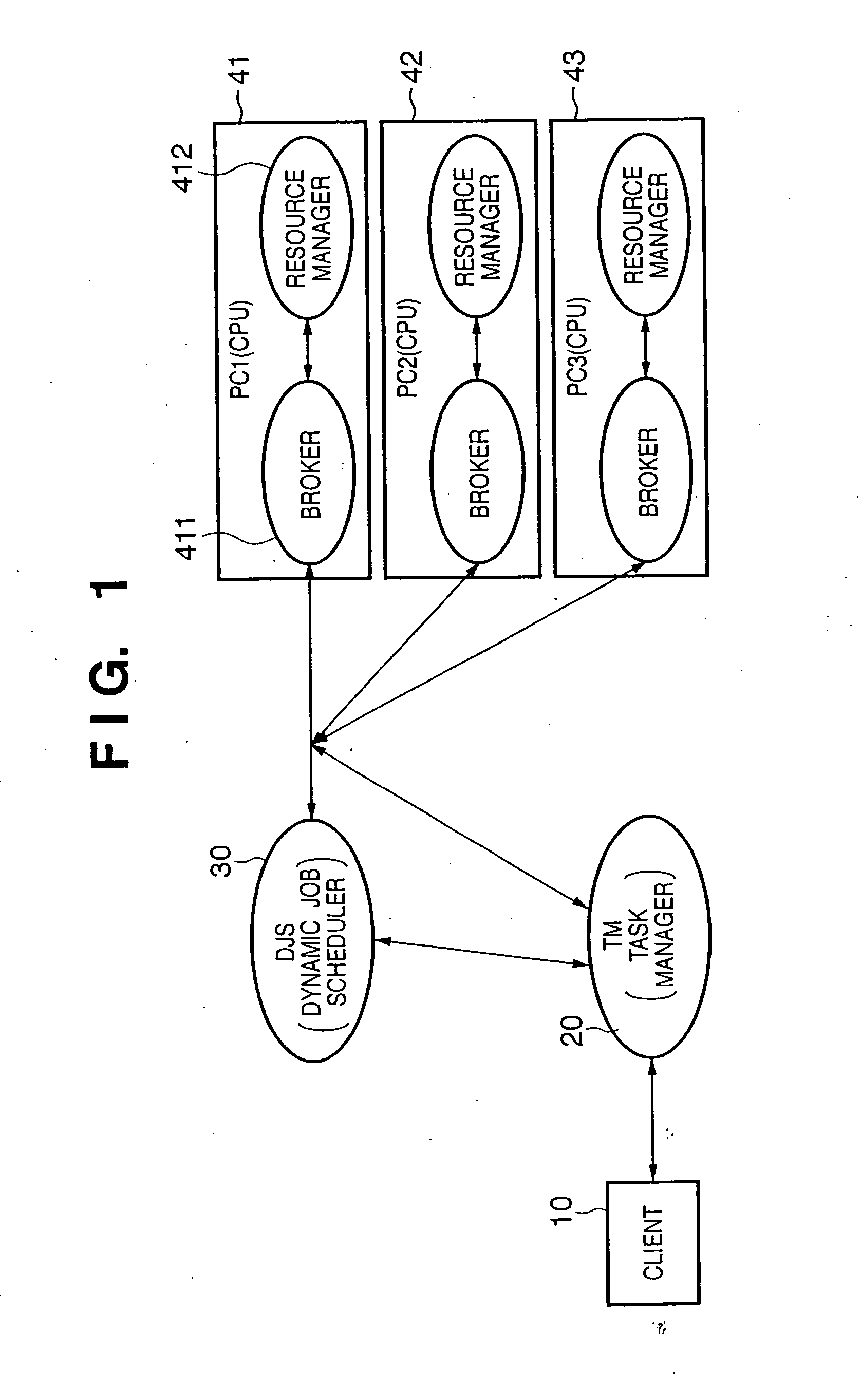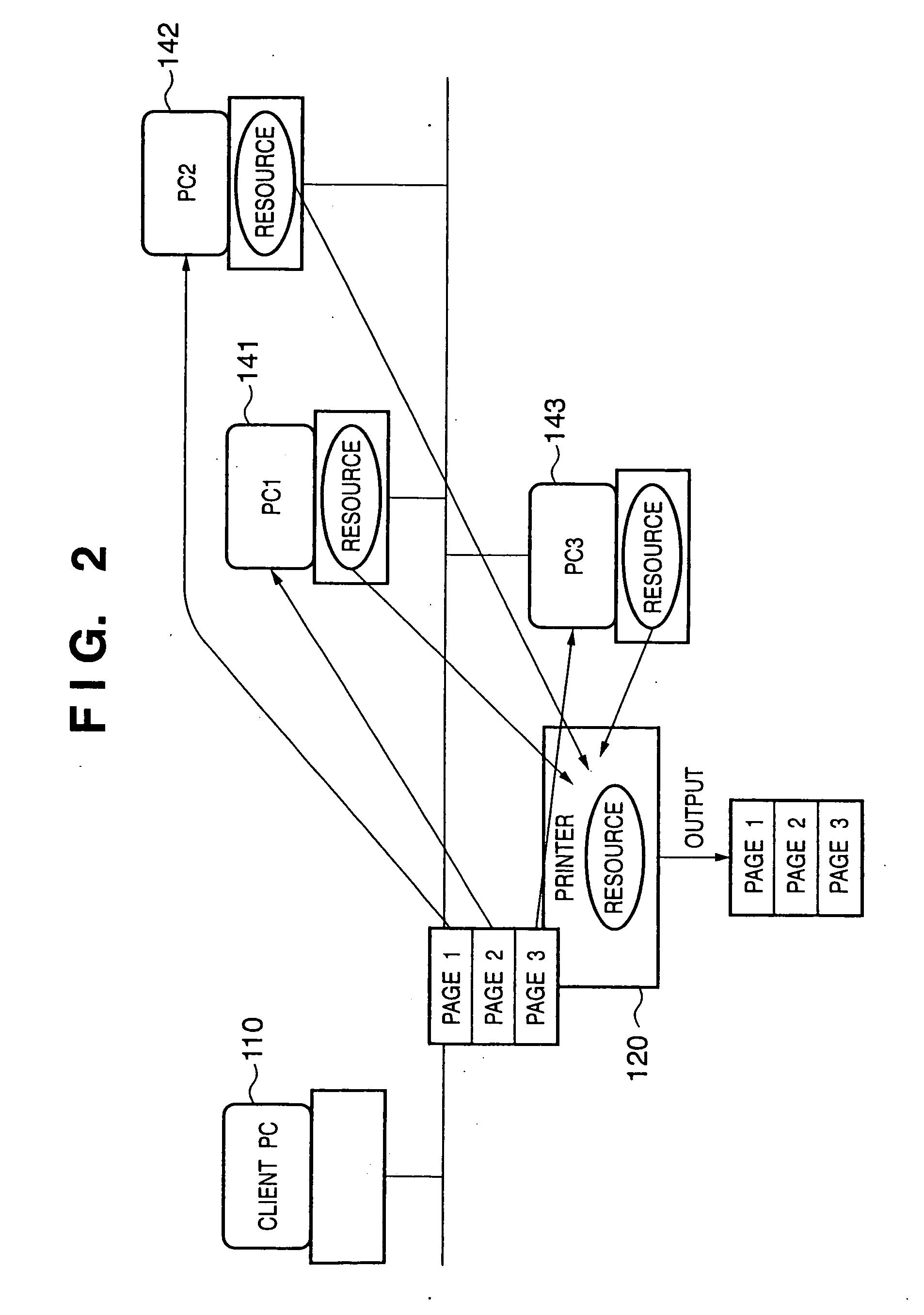Computer system and job assignment method in the system
a computer system and job assignment technology, applied in the field of computer system and job assignment method in the system, can solve the problems of not being able to finish the job, the application of grid computing to a single function peripheral such as a multifunction apparatus or a single function peripheral has not been implemented, etc., and achieves the effect of shortening the total processing tim
- Summary
- Abstract
- Description
- Claims
- Application Information
AI Technical Summary
Benefits of technology
Problems solved by technology
Method used
Image
Examples
first embodiment
(Hardware Configuration of Image Forming Apparatus)
[0044]FIG. 3 is a view showing the outer appearance of an image forming apparatus having a copy function according to the first embodiment. A scanner 201 serving as an image input device illuminates an image on a paper sheet as a document and scans a CCD line sensor (not shown) to generate raster image data.
[0045] The user sets document paper sheets on a tray 203 of a document feeder 204 and inputs a reading operation start instruction from an operation unit 202. The controller CPU of the image forming apparatus gives an instruction to the scanner 201. The feeder 204 feeds the document paper sheets one by one. The scanner 201 reads the document images.
[0046] The operation unit 202 serves as a user interface to do setting instruction or status display in the copy operation or designate various kinds of operation settings.
[0047] A printer engine 103 serving as an image output device prints the raster image data on paper sheets. T...
modification to first embodiment
[0075] In the above-described first embodiment, no particular standard is used in grouping in step S503 of the flow shown in FIG. 5. Grouping may be done in accordance with the capability of each resource transmitted from the broker, such as the processing speed of the resource (CPU) of the client or the capacity of the memory. In this case, the time until the job is finished can be made shorter at a high probability by grouping clients with a high processing speed.
[0076] In the above embodiment, each divided job is used as the unit of forcible termination. In a large-scale system including an enormous number of clients, forcible termination may be executed not for each divided job but for each group which executes the whole job. In, this case, the number of free clients increases. It is effective when the number of requested jobs is large, or the job is often interrupted in each client by user operation.
second embodiment
[0077] An image forming system according to the second embodiment of the present invention will be described below. The image forming system of the second embodiment is similar to the first embodiment. A description of the same parts as in the first embodiment will be omitted, and characteristic parts of the second embodiment will mainly be described.
[0078] In the first embodiment, clients are grouped, and each group is instructed to execute divided jobs. In the second embodiment, so-called round robin assignment processing is executed in which divided jobs are assigned in turn to executable clients (brokers) so that the time until all jobs are finished can be shortened even when, e.g., the number of clients to be subjected to distributed processing is small.
[0079]FIG. 9 is a flowchart showing processing of a DJS according to this embodiment. The processing shown in FIG. 5 to assign divided jobs to brokers and the operation shown in FIG. 6 after divided job assignment in the first...
PUM
 Login to View More
Login to View More Abstract
Description
Claims
Application Information
 Login to View More
Login to View More - R&D
- Intellectual Property
- Life Sciences
- Materials
- Tech Scout
- Unparalleled Data Quality
- Higher Quality Content
- 60% Fewer Hallucinations
Browse by: Latest US Patents, China's latest patents, Technical Efficacy Thesaurus, Application Domain, Technology Topic, Popular Technical Reports.
© 2025 PatSnap. All rights reserved.Legal|Privacy policy|Modern Slavery Act Transparency Statement|Sitemap|About US| Contact US: help@patsnap.com



